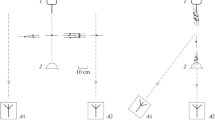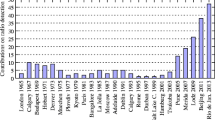Abstract
WE have carried out laboratory and outdoor studies to see whether radio observations with a tuned loop aerial can be used to monitor low energy electrostatic sparks and to separate spark discharges from corona-type discharges. Since corona is in general non-incendive in inflammable hydrocarbon air mixtures—but sparks may be incendive if sufficiently energetic—the observation of electromagnetic radiation from a discharge could form a simple technique for monitoring potential ignition hazards.
Similar content being viewed by others
References
Chubb, J. N., Proc. Second Int. Conf. on Static Electricity, Frankfurt (Main) April 1973 (DECHEMA, in the press).
Taylor, G. I., and McEwan, A. D., J. Fluid Mech., 22, 1 (1965).
Author information
Authors and Affiliations
Rights and permissions
About this article
Cite this article
CHUBB, J., ERENTS, S. & POLLARD, I. Radio Detection of Low Energy Electrostatic Sparks. Nature 245, 206–207 (1973). https://doi.org/10.1038/245206a0
Received:
Issue Date:
DOI: https://doi.org/10.1038/245206a0
- Springer Nature Limited
This article is cited by
-
Improving RT-WEDM performance with a radio frequency signal monitoring system
The International Journal of Advanced Manufacturing Technology (2022)





